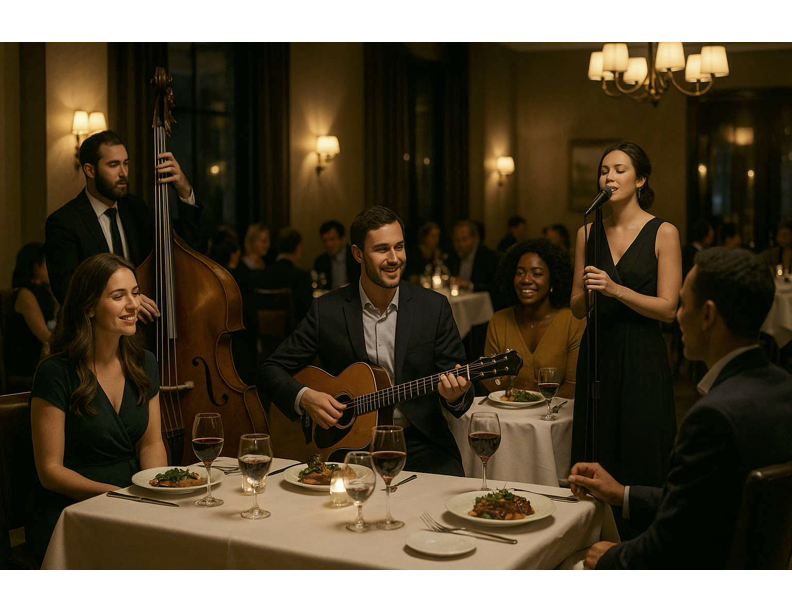Walk into any good restaurant and you’ll notice it: the music. Maybe it’s soft jazz underlining a fine dining experience, or upbeat funk giving a brunch spot its buzz. When done well, music fades into the background—but its effect is powerful. It sets the tone, shapes customer behavior, and impacts how people feel about your place.
Music Isn’t Just Ambience—It’s Strategy
Music affects the vibe of a space. It can make a small restaurant feel cozy, a big room feel alive, or a quiet corner feel more private. Volume, tempo, and genre all influence how fast people eat, how long they stay, and even how much they spend.
Want faster table turnover? Choose upbeat tempos. Want guests to linger over drinks? Slow it down. There’s data backing this up—it’s not just gut feeling.
Match the Music to the Brand
The music should make sense for your space. A rustic Italian trattoria playing heavy metal? Jarring. A cocktail bar spinning elevator music? Forgettable. The key is alignment: the sound should match your food, your decor, and your target audience.
If you’re not sure where to start, think about what kind of mood you want to create. Is your place high-energy or chill? Formal or casual? Think of the music as part of your restaurant’s personality.
Beware the Playlist Trap
One common mistake: handing music off to a random server or letting a single Spotify playlist run on loop. This leads to repetition, mood swings, or songs that just don’t fit. It’s better to create multiple curated playlists or use a professional music service designed for commercial spaces.
Also, keep it legal. Playing music publicly requires the right licenses. Services like Soundtrack Your Brand or Mood Media offer licensed, restaurant-friendly playlists. Don’t risk fines by streaming Spotify or Apple Music—they’re not licensed for public use.
Volume Control Isn’t Optional
Too loud and people can’t talk. Too quiet and the room feels awkward. Volume should change depending on the time of day and the crowd. Lunch service? Lower it. Friday night dinner rush? Turn it up. Walk your space regularly and listen from different tables.
Rotate, Refresh, Repeat
Just like your menu changes with the seasons, your music should evolve too. Updating your playlists keeps things fresh for regulars and staff alike. Nobody wants to hear the same 20 songs every day—not your team, not your guests.
Bottom Line: Music Is a Tool, Not an Afterthought
Get the music right and people won’t notice it—but they will notice the atmosphere, the energy, the way the space feels. That’s what brings them back. So treat your playlist with the same care you give to your lighting, your plating, and your service. It’s part of the experience. Make it count.

